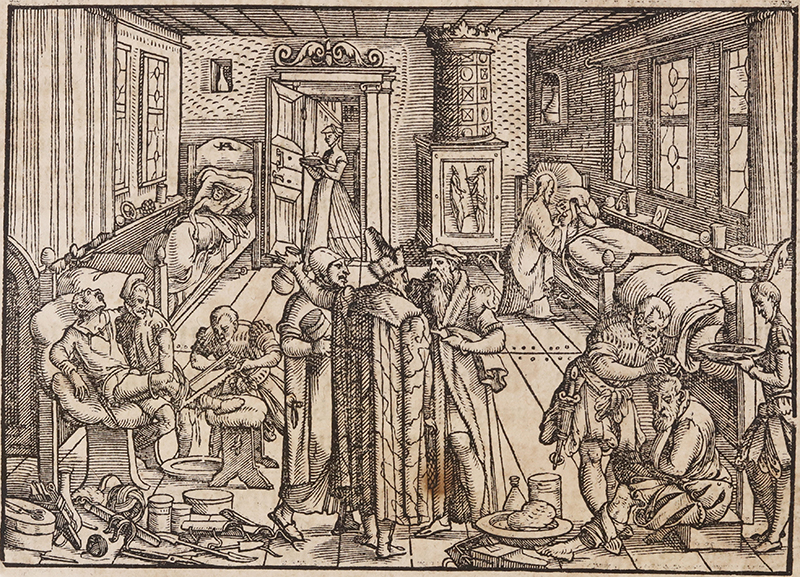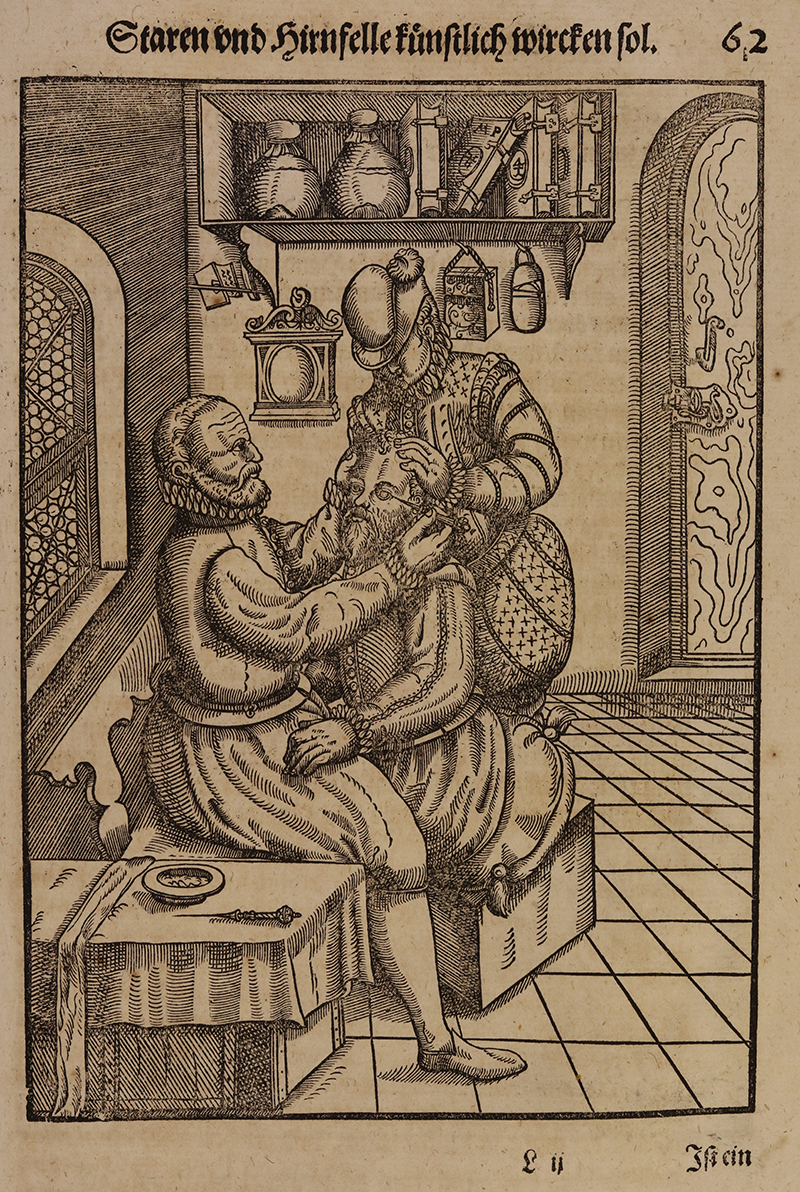When we first begin doing historical research, we start by examining text-based sources. This is especially true in the field of medical history. We want to read old medical texts to learn how our predecessors understood the human body and how this understanding has evolved over the centuries. But the books we hold in special collections are not only valuable for their textual content – their illustrations contain clues to the cultural world of the early modern period.
Some of these are fairly obvious. For example, when we look at illustrations from Vesalius’s 16th-century anatomical atlas “De humani corporis fabrica” and compare them to Frank Netter’s 20th-century anatomical drawings, it becomes immediately apparent that art and science had a much closer relationship in the Italian Renaissance than they do today. But other clues are more subtle.
Look closely at the 16th-century woodcut above from Adam von Bodenstein’s edition of Paracelsus’s surgical works. While it might look like a fairly generic scene suitable for adding a decorative touch to a medical text, a deeper reading shows that this is actually a visual representation of the early modern division of medical treatment. In the central foreground, a finely dressed physician holds a flask of urine, indicating that his role is to provide the diagnosis. To his left and right, barber surgeons perform manual operations such as amputation. In the background, a woman enters the room carrying a bowl toward a sick patient, pointing toward the role women played in administering health care. And in the top right, another invalid seeks the spiritual comfort of religion.
The information in this image isn’t only related to medical practice. The hat worn by the physician and the head covering worn by the woman tell us about 16th-century German fashion, while the architectural details such as the wooden floor and glass windows let us peek into long-lost homes. You can find these sorts of cultural details in many other early modern medical texts.
The woodcut above from Georg Bartisch’s 1583 monograph on eye diseases, “Ophthalmodouleia, oder, Das ist Augendienst,” shows a surgeon couching a cataract, one of the most common operations carried out during the early modern period. This is interesting from a medical perspective, but look at the bookshelf at the top of the image. While we usually shelve our books with the spines facing outward, but these books are shelved fore edge out. This small detail, easily overlooked, provides insight into how something that we now take for granted – how we shelve our books – has evolved over time.
These are just two examples that highlight how our rare book collections provide insight not only into early modern medicine but early modern culture. It’s amazing just how much you can uncover once you start to peer beneath surface-level details!


